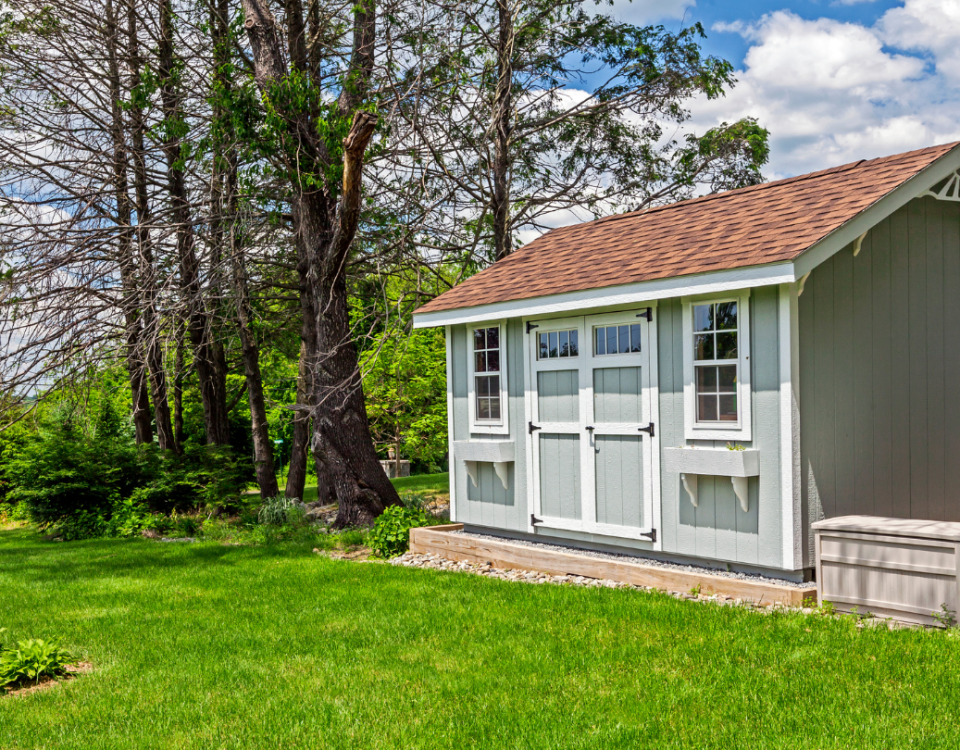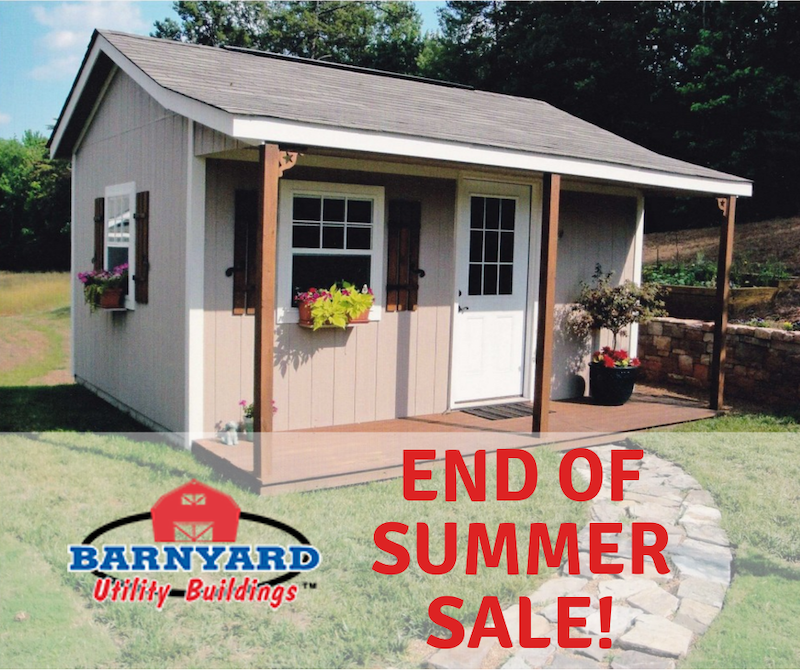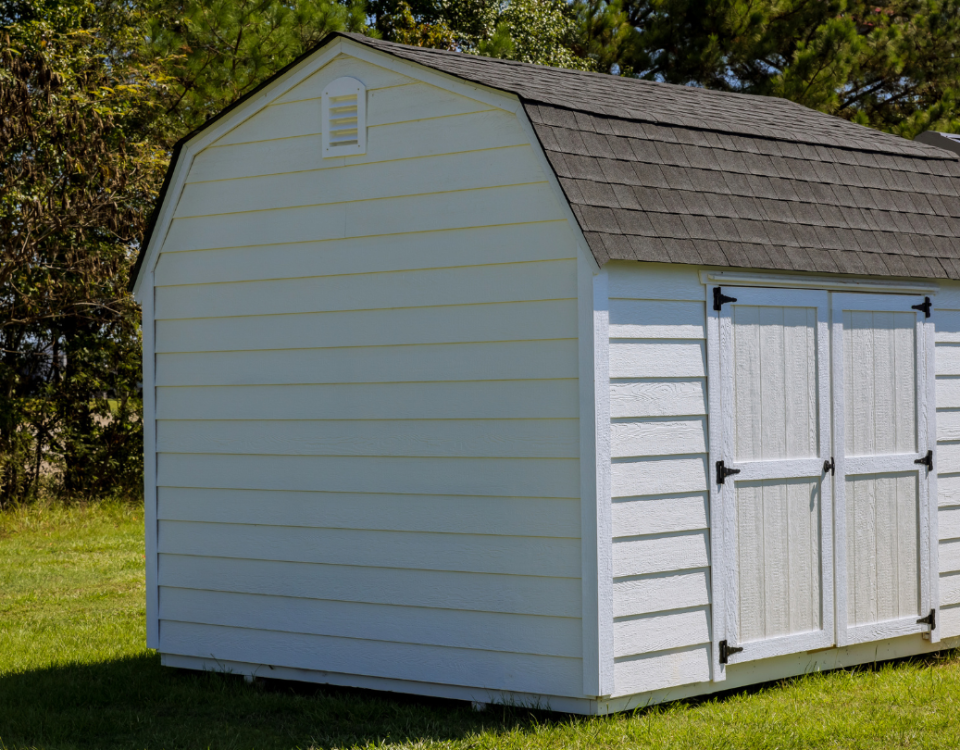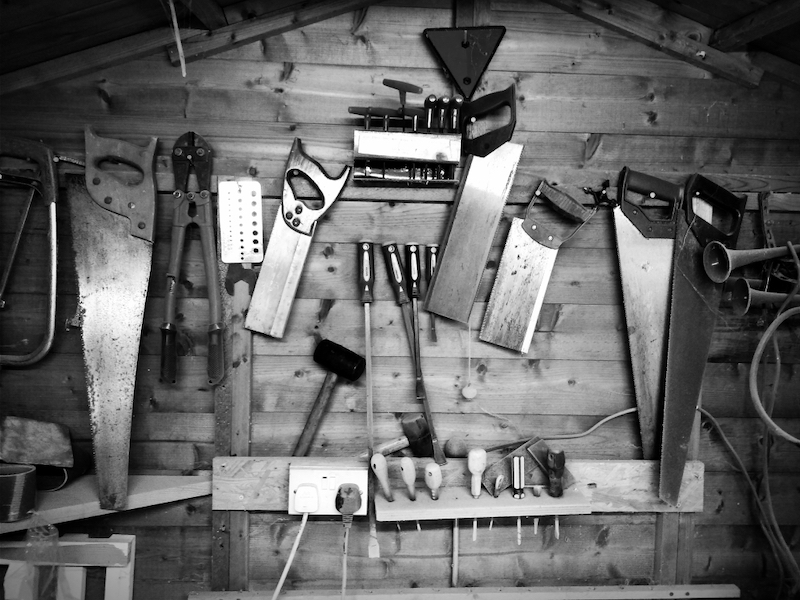Key Takeaways:
- Material Selection is Crucial: The choice of materials for building an outdoor shed significantly impacts its function, durability, and aesthetic appeal.
- Pressure-Treated Lumber and Exterior-Grade Plywood for Durability: Pressure-treated lumber is ideal for parts of the shed that will be in direct contact with the soil, as it is treated to resist rot. Exterior-grade plywood is recommended for its strong weather-resistant qualities.
- Consider OSBs for Budget Constraints: If the budget is a significant concern, OSBs can be used for sheathing the shed’s walls and roof.
Lawn and backyard extensions are easy to create since they won’t directly interact with your house. It allows you to go wild with your design options without compromising your home’s structural integrity.
An outdoor shed can provide various advantages to your home, from extending your storage spaces to creating a hobbyist corner separate from your home. Before you start your shed-building project, you should first consider your wood options to find the perfect material to fit your purposes.
Building an outdoor shed
A construction project’s material will dictate its function, durability, and aesthetic appeal. You must consider the medium you want to use, especially if you’re building something for the outdoors. Your wood choices vary with their different features. Beyond the traditional option of framing lumber, other wood selections boast several features and advantageous qualities.
In this article, we will share three wood types you should consider when building your shed.
Pressure-treated lumber
Similar to regular framing lumber, pressure-treated lumber is a standard option for shed-building projects. However, its special factory treatment reduces instances of wood rot, which makes it excellent for direct contact on soil moisture. Keep in mind that even pressure-treated lumber can still experience wood rot, especially under moist conditions. If you’re using wood as your shed’s base, you should ensure that the lumber you’re buying is fit for below-ground foundations.
Oriented Strand Boards (OSBs)
You can separate a shed into two main parts: its structural frame and sheathing. An Oriented Strand Board (OSB) is the most affordable option if you plan to sheath your shed’s walls and roof. Since it comes from softwood chips in a random pattern, it provides a unique texture to your project. However, it does come with several caveats to compensate for its price.
Its low price is a reflection on its weakness that’s even below the level of conventional plywood. It won’t age well against different weather conditions, especially when comparing it with the durability of. If you’re cutting down your budget, OSB sheathing is an excellent option to finish your shed. Nevertheless, you should opt for high-quality plywood if you want your structure to last for a longer period.
Exterior-grade plywood
The best way to ensure the durability of your project is to buy robust materials. Exterior-grade plywood is leagues beyond the durability of OSB with its strong weather-resistant qualities. Plywood is a universal construction material for different woodworking projects, making it an excellent material to have leftovers of. You can convert the excess plywood to frames, boxes, and utility shelves.
Thick plywood that measures at least 5/8 in thickness works great for roof and walls sheathing. Although it has high durability, it doesn’t have strong rot-resistant properties. It’s best to use pressure-treated plywood for your shed’s flooring.
Conclusion
A shed can solve many of your worries as a homeowner, from setting up a separate workstation to finding more space for your lawn care equipment. With the right design and professional help from building contractors, you can add a versatile addition to your home without an expensive budget. Keep in mind that your lumber options will be an essential factor in the cost of your project. This is why you should always buy from reliable suppliers to get great deals for quality materials.
Barnyard Utility Buildings helps homeowners develop outdoor storage buildings in Charlotte for different purposes. Our standard designs can be the starting point for modifications that will meet your shed’s personal needs. Contact us to learn more about our products and services!
Proudly serving customers across North and South Carolina including Matthews, NC, Charlotte, NC, Indian Land, SC, Lancaster, SC, and beyond.







